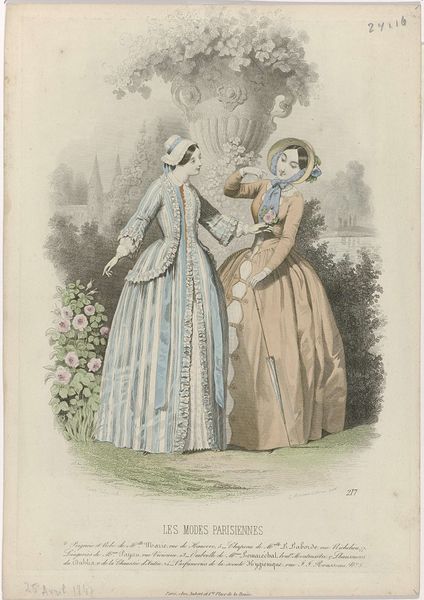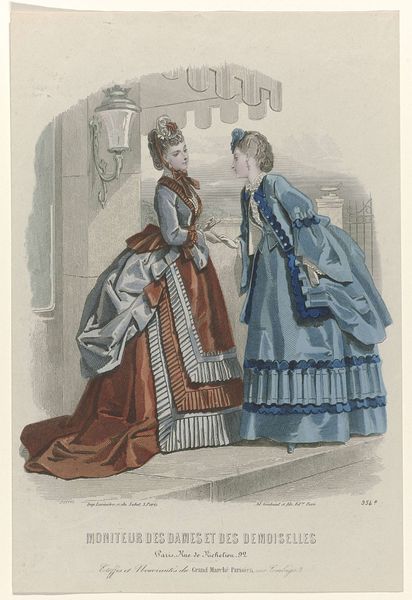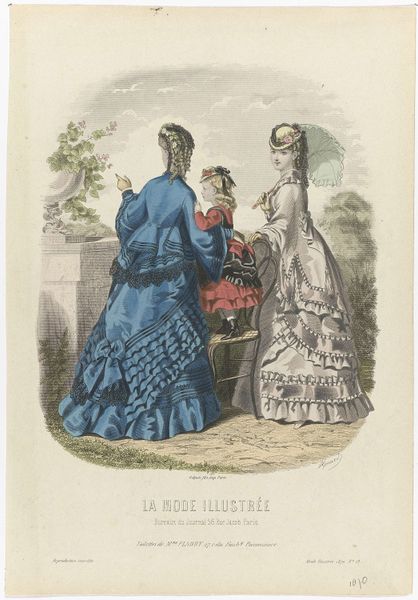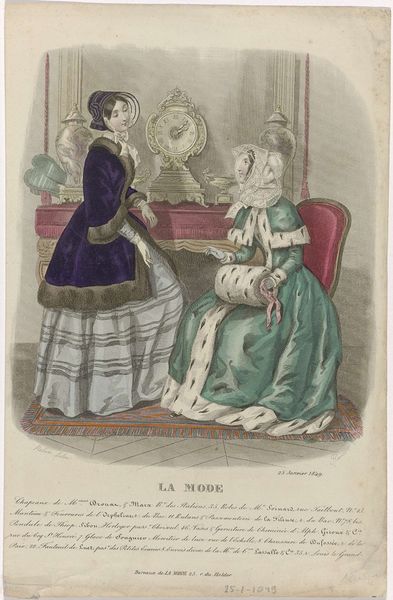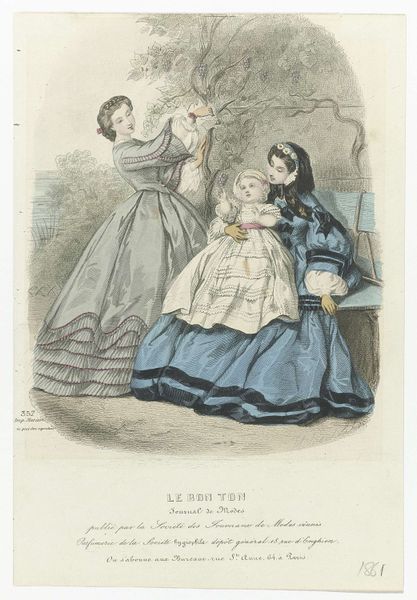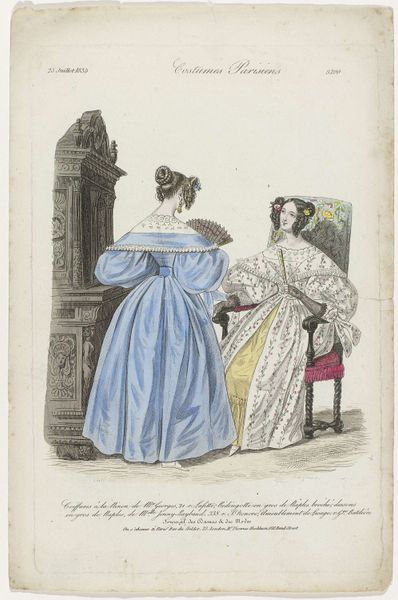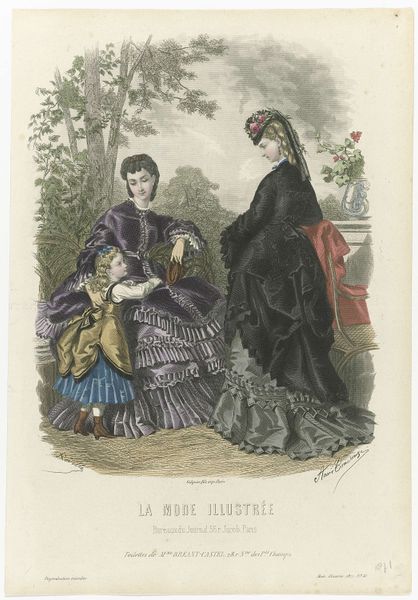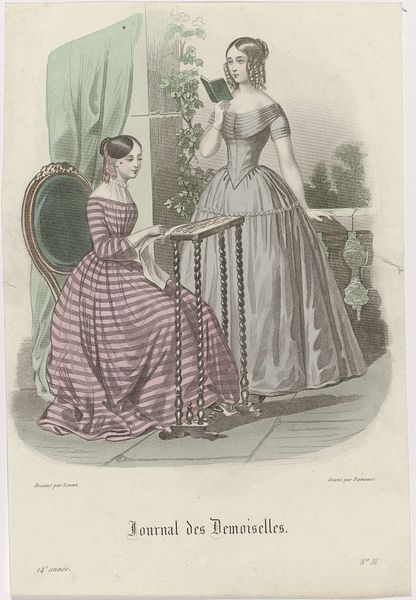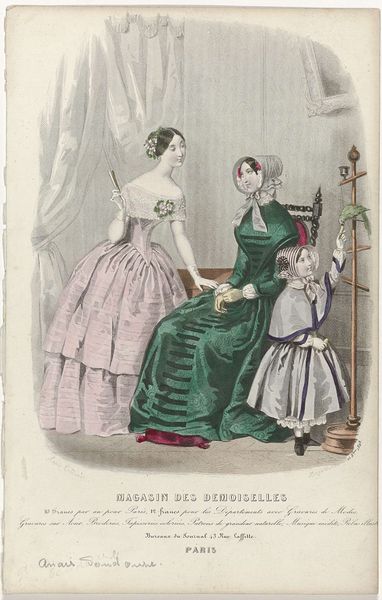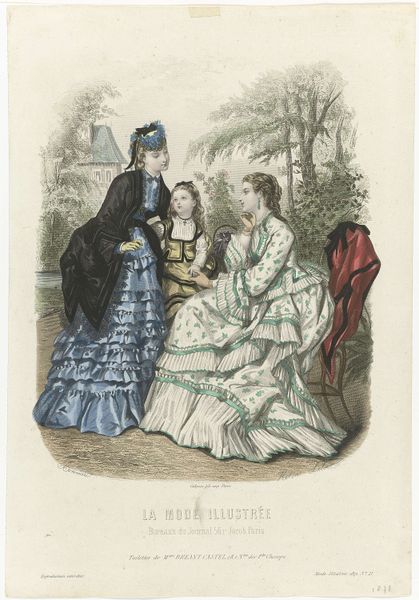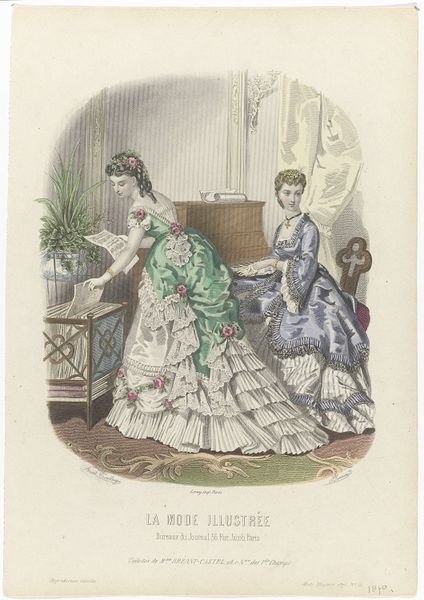
Dimensions: height 298 mm, width 219 mm
Copyright: Rijks Museum: Open Domain
Editor: Here we have "De Gracieuse, Geïllustreerde Aglaja, 1868, No. 917," a watercolor illustration. My first impression is that it's an intriguing genre painting because of its delicate lines. What jumps out at you in this artwork? Curator: What intrigues me most is the interplay of form and function within this seemingly simple illustration. Note the meticulous attention to detail in the depiction of the dresses, highlighting their structural integrity through the intricate use of lines and colors. The artist M. Gervais isn't merely representing clothing, but constructing a visual language that speaks to the textures, weights, and volumes of the garments. Editor: So, it’s more about the forms of the dresses themselves than what they represent socially? Curator: Precisely. The strategic use of watercolor allows for subtle gradations of color, which serve to define the shape and drape of the fabric. Observe how the artist utilizes shadowing to give depth to the folds, creating a sense of three-dimensionality on a two-dimensional surface. In a sense, Gervais is exploring the poetics of clothing construction itself, treating each dress as an architectural feat. The background, with its muted tones and simple rendering, intentionally defers to the intricate details of the dresses. What do you make of that decision? Editor: That does draw attention to the dresses; without the details of the background, the texture of each outfit becomes important. Thanks, I never would have thought of the rendering technique in this way! Curator: And therein lies the potential within each piece. It goes to show that a formalist analysis can change one’s initial assumptions!
Comments
No comments
Be the first to comment and join the conversation on the ultimate creative platform.
